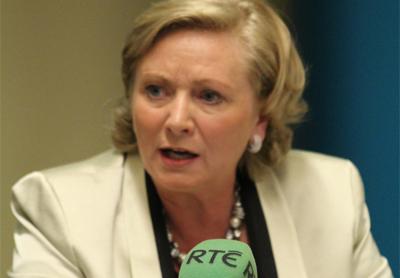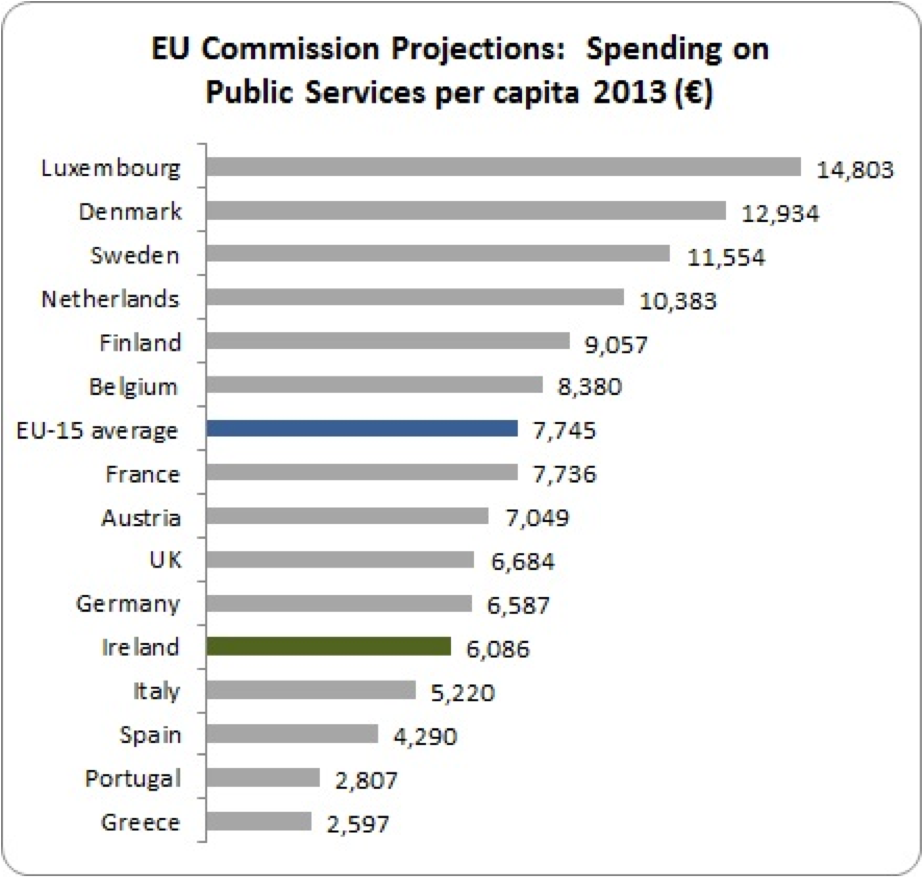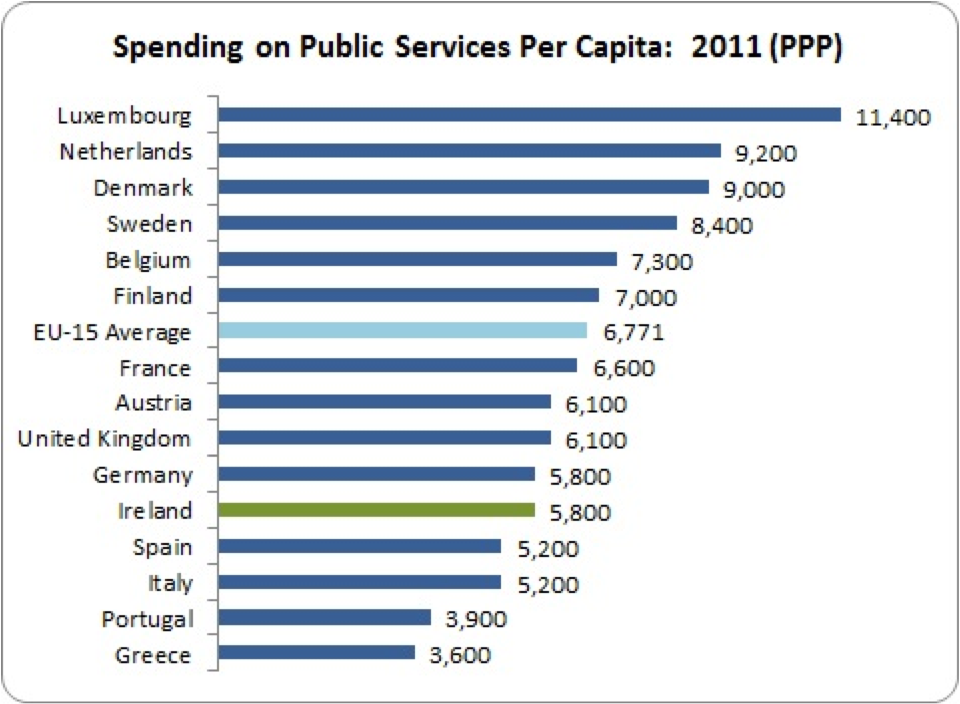Shake it til the facts spill out

There is no measurement which can come even close to justifying Frances Fitzgerald's claim yesterday that we are one of the biggest spenders on public services in the industrialised world. By Michael Taft.
Sometimes you just want to pick up the radio and shake it until the tiny little people inside start talking sense. Take Minister Frances Fitzgerald onthe Pat Kenny show yesterday:
Fitzgerald: The country is broke. The path back for every citizen in this country is going to be so tough. And yet we’re the fourth-highest in the OECD when it comes to spending on public services. That’s often forgotten.
Never mind the country-is-broke lark (we’re not too broke to pay over €3 billion a year on a non-existent bank). Nor the ‘path back’ reference (easy for some, harder for others). But the fourth-highest spender on public services in the industrialised world? Huh? Not only should it be forgotten, it shouldn’t even be remembered because it is simply not the case.
Eurostat provides a comprehensive database on spending on public services, or Government final consumption expenditure. They provide total spending, percentage of GDP, per capita and spending in power purchase parities (PPPs, which factor in living costs). It should be noted that this doesn’t count spending on social transfers (pensions, unemployment payments, family income supports, etc.).
Here is the spending per capita on public services in the EU-15.

Ireland doesn’t rank as a large spender on public services. We rank 9th in the EU-15 league, ahead of the UK, Germany and, not surprisingly, the Mediterranean countries. We spend 16% below the average of the other EU-15 countries.
- We would have to spend an additional €5.5 billion on public services just to reach the average of other EU countries.
- We would have to spend an additional €8.7 billion on public services just to reach the average of other EU countries not in bailout (excluding Portugal and Greece).
We’d have to spend an awful lot more money to be like an average EU country (though, yes, spending more money is not a guarantee of improved output).
Maybe the Minister was referring to public spending measured in PPPs to factor in the cost of living. High cost countries need to spend more to get the same value as low cost countries. So how do we stack up in this measurement?

In this measurement, Ireland shares 11th place in the standings with Germany. Now, we’re only ahead of the Mediterranean countries.
Was the Minister referring to spending on public services as measured by percentage of GDP? I don’t think so. The other EU-15 countries spend an average 22.3% of their GDP on public services; in Ireland, it is 18.3%. We would need to increase spending by €6.3 billion just to reach the average on this measurement.
Eurostat also estimates the spend, as a percentage of GDP, for the years 2012 and 2013. These estimates show that Ireland would have to increase spending on public services by €7.1 billion in 2012 and €7.9 billion in 2013 just to reach the average of other EU-15 countries. This shouldn’t be surprising as the Government intends to cut public services up to 2015 at least.
Of course, some will raise the issue of military spending. Unlike other EU countries, especially the UK and Greece, we don’t spend a lot on military (neither should the UK or Greece). This, say some, skewers the spending figures.
So what happens if we subtract spending on military services? Not a whole lot. Ireland would still need to spend an extra €4.9 billion to reach the average of other EU-15 countries in 2011. This figure would still rise in 2012 and 2013 if the Eurostat estimates hold.
There are other arguments. For instance, other countries have a larger elderly population which requires more expenditure on health and other age-related services. This is true. But Ireland has a larger youth demographic which requires a higher spend on education and youth-related services (justice, recreation and leisure, etc.). Further, Ireland has a much lower population density than other EU-15 countries - with the exception of Sweden and Finland. There are 65 people per square kilometre in Ireland; the average of the other EU-15 countries is 171, while in the Netherlands it is 492. Thin density means that public services (health, education, water, energy, security, etc.) have to be spread out, making it difficult to reach the scale that can be obtained in highly urban societies.
However you spin it, the Minister is wrong. There is no measurement which can come even close to justifying her claim that we are one of the biggest spenders on public services in the industrialised world. The truth is that we’d have to spend billions just to reach the average of other EU-15 countries. We are a low-low spend economy when it comes to public services.
If people want to argue that fiscal consolidation based on spending cuts is superior to a tax-based fiscal consolidation, fine. If people want to argue that much of our spending on public services is inefficient, fine. Let’s test the evidence, let’s come up with proposals to increase efficiency.
But first and foremost, let’s start with the facts Let’s describe the situation as it really is. If we don’t, the debate becomes degraded and reality becomes anything you want it to be.
